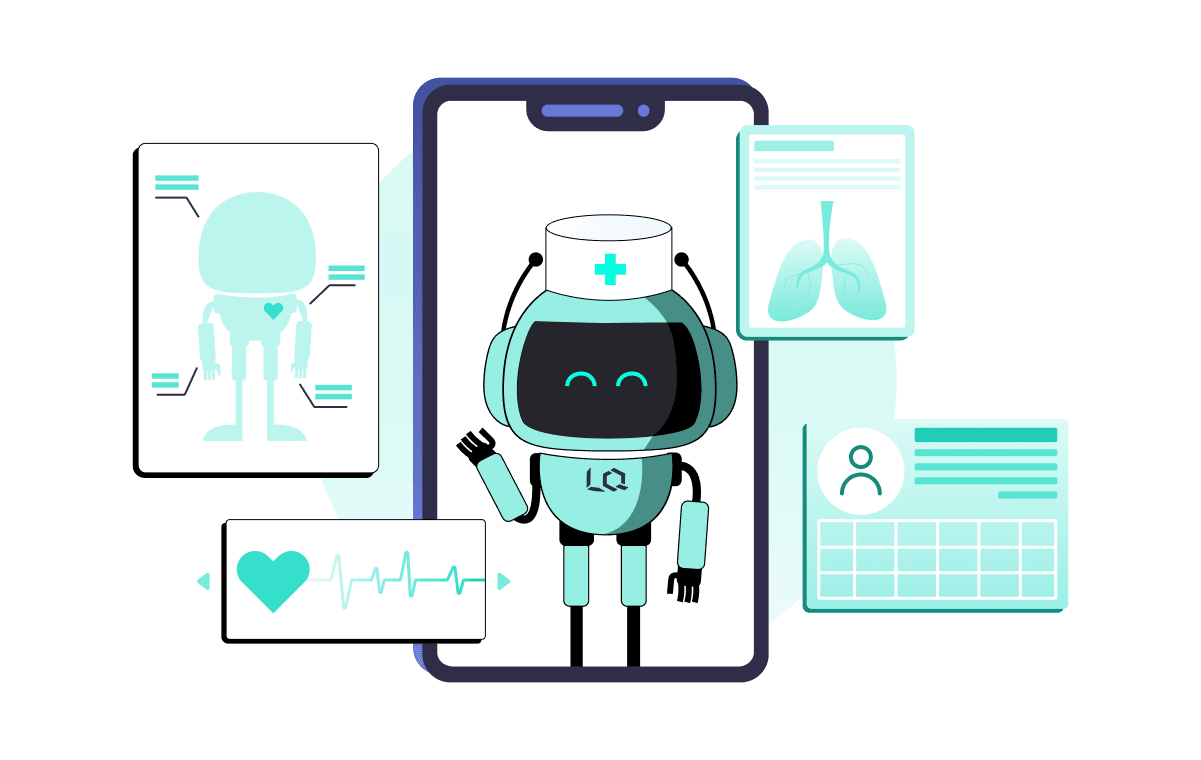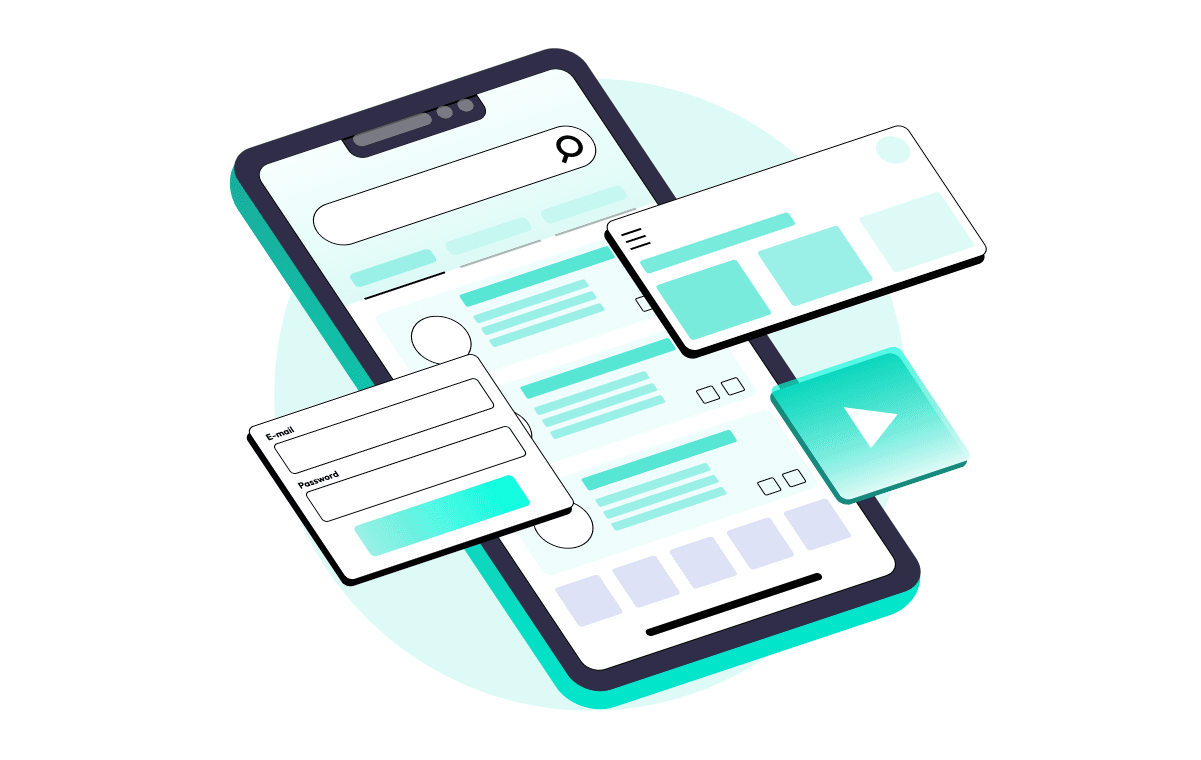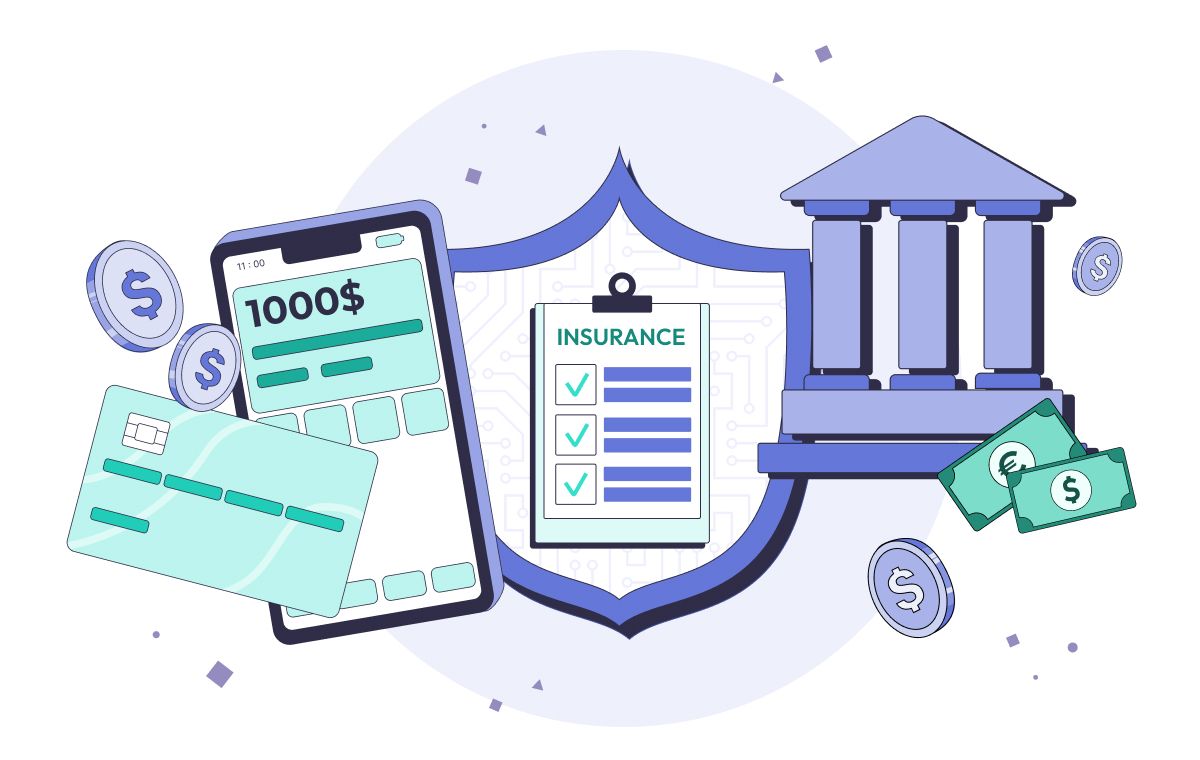Updated Nov 21, 2024 17 min read
Healthcare App Testing: Balancing Functionality, Security, and User Needs
This article provides an essential guide on balancing functionality, security, and user needs in healthcare app testing. It explores the rise of mobile and wearable technologies in healthcare, the market's growth potential, and the critical role of software in enhancing healthcare delivery. Learn about the various software products reshaping healthcare, from EHRs to mobile health apps.

The wide use of mobile and wearable technologies epitomizes this technological trend in digital healthcare. For instance, about 30 percent of U.S. adults routinely use wearable devices, and smartphone owners are predicted to reach 12.1 billion people by 2030. That reflects how essential mobile applications are in healthcare delivery. One would deem that impressive. Here's another numerical confirmation of why software development in healthcare is so much on the run. Besides, there has been an increase in healthcare software as a service, estimated to be a $51.7 billion market by 2028, growing at a CAGR of 19.5% from 2021 to 2028. Growth has been further propelled by increased attention towards remote care and the advancement in cloud computing technologies, all accelerated by the COVID-19 pandemic.
Many other mobile apps in the healthcare field need to be designed and tested, such as patient monitoring, telemedicine, appointment scheduling, and billing, among others. The following article will explore the significance of healthcare app testing, the features, and the mechanisms to be applied in testing healthcare apps. Now, let's look closer into the critical role healthcare app testing takes and all the best practices to cope with these complex issues.
A Comprehensive Overview of the Healthcare Industry
The healthcare industry is vast, centering on preventing, diagnosing, treating, and managing illness and well-being, whether mental or physical. It helps people live longer and healthier lives, thanks to the services offered by medical and nursing professionals. As such, it is a critical element of daily life that directly affects individuals' quality of life and longevity worldwide.
Software Products in the Healthcare Industry
The digital transformation of the healthcare industry has led to the development of various software products, each designed to address specific aspects of healthcare delivery and management:
- Electronic Health Records (EHRs): Digital versions of patients' paper charts; EHRs are real-time, patient-centered records that make information available instantly and securely to authorized users.
- Mobile Health Apps: Applications for smartphones and tablets that directly offer health-related services to consumers, from medication reminders to mental health support.
- Diagnostic Systems: Advanced software systems, often powered by artificial intelligence (AI), that assist in diagnosing diseases based on imaging studies, laboratory results, and other data.
- Health Information Systems (HIS): Systems that manage healthcare data, including patient information, billing, and scheduling, to improve healthcare service efficiency.
- Blockchain for Health Data Exchange: Technology used to create secure and immutable health transaction records, enhancing patient data's privacy and security.
- Internet of Medical Things (IoMT): Network of connected devices that collect and share health data, improving patient monitoring and outcomes.

As healthcare industry expands, the role of software products becomes increasingly central, enhancing healthcare delivery and efficiency and empowering patients to take an active role in their health management.
Testing Methodologies for Ensuring Reliability and Efficiency
A comprehensive testing strategy is essential to guarantee that healthcare applications meet the highest standards of reliability and efficiency. This strategy should encompass testing for data accuracy to prevent errors like incorrect display of health indicators, which could significantly alarm or mislead users.
Testing Methodology | Purpose | Examples |
|---|---|---|
Functional Testing | Verifies that each feature of the application operates according to the specified requirements, ensuring that all functionalities are working as intended. | Testing a patient data entry feature to ensure that all entered data is correctly saved and retrieved within an Electronic Health Record (EHR) system. |
Performance Testing | Assesses the application's speed, responsiveness, and stability under a variety of load conditions. | Simulating multiple users accessing the application simultaneously to check how the system performs under peak load, especially functions like appointment booking or accessing patient records. |
Security Testing | Identifies vulnerabilities in the application to prevent data breaches and ensure the protection of sensitive health information, complying with standards like HIPAA. | Conducting penetration testing to identify and fix security flaws that could allow unauthorized access to patient data. |
Usability Testing | Evaluates the application's user interface and overall user experience to ensure it is intuitive and accessible, encouraging effective use by healthcare providers and patients. | Gathering a group of users to interact with the application, observing their ability to complete tasks like scheduling an appointment or locating health information without assistance. |
Integration Testing | Ensures the application can effectively communicate and function with other healthcare systems and devices, crucial for maintaining seamless data flow and interoperability. | Testing the integration between the healthcare application and laboratory information systems (LIS) to ensure lab results are accurately transmitted and displayed in the patient's record. |
Compliance Testing | Confirms that the application meets all regulatory requirements and industry standards, verifying it is safe and legal for healthcare use. | Reviewing the application against HIPAA compliance checklists to ensure all aspects of patient data handling, from storage to transmission, meet privacy and security standards. |
These healthcare app testing methodologies collectively confirm that healthcare applications perform their intended functions and provide a secure, efficient, and user-friendly experience for healthcare providers and patients. By adhering to a comprehensive healthcare app testing strategy encompassing these aspects, developers can deliver high-quality healthcare applications that meet the critical needs of the healthcare industry.

Interested in learning more about our experience in this industry? Read about our case study IntelyCare to get detailed insights.
Healthcare applications are designed to serve many purposes, from patient management to clinical decision support. Key functions that should be present in these applications include:
- Patient Data Management: Secure and efficiently handling patient records, including medical history, current medications, allergies, and treatment plans.
- Appointment Scheduling: Facilitating easy scheduling and rescheduling of appointments for patients, reducing wait times and improving overall access to care.
- Telehealth Capabilities: Offering remote consultation options to patients through video calls, messaging, and digital monitoring, thereby expanding the reach of healthcare services.
- Medication Management: Providing tools for tracking medication schedules, dosages, and adherence, including reminders for patients to take their medications.
- Interoperability: Ensuring seamless exchange and utilization of health information across various healthcare systems and applications to support coordinated care.
Example Test Case for Checking Core Functionality

Manual Testing vs. Automated Testing for Healthcare Applications
When it comes to testing the functionality of healthcare applications, both manual and automated testing have their roles and advantages.
- Manual Testing: Essential for assessing the application's user experience, usability, and overall look and feel. Manual testing allows testers to experience the application from a user's perspective, making it invaluable for identifying issues that test automation services might overlook, such as subtle UI/UX issues or complex user interactions. It is beneficial in the early stages of development and for exploratory testing.
- Automated Testing: Best suited for repetitive tasks and regression testing, automated testing can significantly speed up the testing process and increase accuracy. It's ideal for testing functionalities requiring executing the same steps with different data inputs, such as form submissions and retrieval processes. Automated tests can run 24/7, providing quick feedback to the development team.
While automated testing enhances efficiency and reliability in identifying bugs, manual testing services remains crucial for ensuring the application meets the highest usability and user satisfaction standards. By employing a mix of both testing methodologies, product owners can ensure their healthcare applications are functional but also intuitive and user-friendly, ultimately contributing to better patient care and healthcare outcomes.
Security of Healthcare Applications
With its reliance on digital technology for managing sensitive patient data, the healthcare industry faces a unique set of security threats. These threats include cyberattacks such as phishing, ransomware, and other malware designed to steal or compromise patient information. Additionally, insider threats, whether accidental or malicious, pose a risk to the integrity and confidentiality of health data.
Standards and Regulatory Requirements for Data Security in Healthcare Applications
To protect against these threats, healthcare applications must adhere to stringent data security standards and regulatory requirements. The Health Insurance Portability and Accountability Act (HIPAA) in the United States, the General Data Protection Regulation (GDPR) in the European Union, and other regional regulations set forth specific mandates for protecting health information. These regulations require implementing technical, physical, and administrative safeguards to ensure patient data's confidentiality, integrity, and availability. Compliance with these standards is not optional but a legal and ethical obligation for all entities handling health information.
Examples of Security Threats in Healthcare Applications
To enhance the understanding of security healthcare app testing, let's delve into specific examples illustrating common security threats and introduce a table listing tools commonly used for security testing services, which are instrumental in identifying vulnerabilities and enforcing data protection standards.
Phishing Attacks: Cybercriminals impersonate legitimate entities to trick healthcare staff into revealing sensitive information, such as login credentials. An example includes a fake email sent to hospital staff, claiming to be from the IT department and asking them to update their passwords through a malicious link.
Ransomware: For instance, a hospital's electronic health records system could be locked, paralyzing operations.
Insider Threats: Workers intentionally or accidentally compromise patient data. This could occur if an employee inadvertently downloads malware onto a networked system, exposing patient records.
Unencrypted Data Transmission: Patient data is transmitted over the internet without encryption, making it susceptible to interception. An example is a telehealth platform that sends patient health information over non-secure channels.
By avoiding potential threats and employing best practices in security testing, healthcare organizations can guarantee the confidentiality, integrity, and availability of vital health information, maintaining trust and safety for patients and providers.
Techniques and Tools for Security Testing of Healthcare Applications
Ensuring the security of healthcare applications involves a comprehensive approach to testing, which includes:
- Vulnerability Assessment: Identifying security weaknesses in the application through automated scanning tools and expert analysis.
- Penetration Testing: Simulating cyberattacks to evaluate the effectiveness of security measures and identify potential points of failure.
- Code Review: Analyzing the application's source code for security flaws using automated tools and manual inspection by security experts.
- Compliance Auditing: Regularly reviewing practices and systems against regulatory standards to ensure ongoing compliance with data protection laws.
When used together, these techniques provide a robust framework for identifying and mitigating security risks in healthcare applications.
The following table showcases a selection of essential tools that play a vital role in identifying vulnerabilities, enhancing data protection, and ensuring compliance with stringent requirements for healthcare testing services. These tools, ranging from vulnerability scanners to static code analysis software, allow healthcare IT professionals to rigorously test and secure their applications against potential cyber threats.
Tool Name | Type of Tool | Purpose | Example Use Case |
|---|---|---|---|
OWASP ZAP | Vulnerability Scanner | Identifies vulnerabilities in web applications | Scanning a healthcare portal for common vulnerabilities like SQL injection or cross-site scripting. |
Nessus | Vulnerability Scanner | Conducts vulnerability assessments to identify and remediate weaknesses | Performing a network scan to identify unpatched software or misconfigured networks in a hospital's IT system. |
Burp Suite | Security Testing | Assesses the security of web-based applications and services | Intercepting and analyzing traffic from a healthcare application to test for data leakage. |
SQLMap | Automated Tool | Detects and exploits SQL injection flaws | Automatically testing a healthcare application's database for SQL injection vulnerabilities. |
Aircrack-ng | Network Security | Assesses Wi-Fi network security | Testing the security of wireless networks in a healthcare facility to prevent unauthorized access. |
Veracode | Static Code Analysis | Reviews source code to identify security flaws | Analyzing the code of a healthcare application before deployment to find and fix security issues. |
The security of healthcare applications is a multifaceted challenge that requires ongoing attention to evolving threats and compliance requirements. By implementing rigorous healthcare app testing methodologies, adhering to strict data protection standards, and employing advanced security technologies like encryption, healthcare organizations can protect their patients' data from cyber threats.
User Needs and Requirements in Healthcare Applications
The development of healthcare applications is significantly influenced by the needs and requirements of its end-users, which include patients, healthcare professionals, and administrative staff. Understanding these needs is crucial for creating applications that are not only functional but also user-friendly, accessible, and effective in facilitating healthcare delivery.
- Patients seek convenience, privacy, and ease of use in applications to manage their health information, schedule appointments, and communicate with healthcare providers.
- Healthcare Professionals require applications to be reliable, efficient, and integrated with existing healthcare systems to support patient care, diagnostic processes, and treatment planning.
- Administrative Staff need applications that streamline operations, enhance data management, and improve healthcare service delivery.
To accurately capture these diverse requirements, developers can employ various methods (surveys, interviews, and user personas). Analyzing this data helps in tailoring application features to meet the specific needs of each user group, thereby enhancing the application's usability and adoption.
Engaging End-Users in the Healthcare App Testing Process
Involving end-users in testing is a key strategy for aligning healthcare applications with user expectations and real-world scenarios. This approach, known as user acceptance testing (UAT), enables direct feedback from users on the application's functionality, usability, and performance in actual use cases.
Method of Engagement | Type of Feedback | Action on Feedback |
|---|---|---|
Beta Testing | Performance issues, usability glitches, feature requests | Fix reported bugs and glitches. Evaluate and prioritize feature requests for development. Optimize application performance based on real user data |
Focus Groups | User experience insights, interface design feedback, specific feature usability | Redesign user interface elements for better usability. Refine or add features based on direct user insights. Adjust workflows within the application to match user expectations |
Surveys and Feedback Forms | Satisfaction levels, desired features, accessibility concerns | Measure user satisfaction and identify areas for improvement. Plan future updates based on desired features. Enhance accessibility features based on user needs |
User Interviews | In-depth insights into user needs, detailed experiences with the application, suggestions for improvement | Gain a deep understanding of user challenges. Identify specific areas of the application for enhancement. Develop a roadmap for future updates based on detailed user suggestions |
These methods ensure that the application meets the practical needs of users and builds a sense of involvement and ownership among the user community, fostering a positive relationship between the application and its intended audience.
Enhancing User Experience Based on Feedback
The iterative process of collecting and implementing user feedback is fundamental to the continuous improvement of healthcare applications. This feedback loop allows developers to identify pain points, understand user behavior, and refine the application over time.
- Feature Enhancements: Upgrading existing features based on user suggestions to meet their needs better, such as simplifying navigation or adding more personalization options.
- Usability Improvements: Adjusting the application's design and interface to enhance ease of use, accessibility, and satisfaction.
- Performance Optimization: Addressing any technical issues users report, such as slow responses, long load times or bugs in handling network issues, to ensure a smooth and reliable user experience.
Integrating user needs and requirements into developing and testing healthcare applications is essential for creating solutions that effectively serve their intended purpose. Engaging users in the testing process and responding to their feedback are key strategies for achieving a user-centric design that enhances the healthcare experience. As the healthcare industry evolves, prioritizing user needs and continuously refining applications based on user feedback will be critical for developing innovative and impactful healthcare technologies.
Conclusions
Developing and testing healthcare applications in healthcare technology is crucial in improving patient care and data security. This article explores features of the healthcare industry, the key functionalities of healthcare apps, and the rigorous testing methodologies required to ensure reliability and data protection. By prioritizing user needs and continually refining applications based on feedback, developers can contribute to the seamless integration of technology in healthcare, ultimately benefiting patient care and outcomes.
Contact us to learn more about how we can support your healthcare technology initiatives.
Comments
There are no comments yet. Be the first one to share your opinion!
For 8 years, we have helped more than 200+ companies to create a really high-quality product for the needs of customers.
- Quick Start
- Free Trial
- Top-Notch Technologies
- Hire One - Get A Full Team
Was this article helpful to you?
Looking for reliable Software Testing company?
Let's make a quality product! Tell us about your project, and we will prepare an individual solution.
FAQ
Challenges include ensuring data privacy, complying with regulations like HIPAA, and meeting diverse user needs.
Healthcare app testing includes security testing to identify vulnerabilities and ensure compliance with regulations like HIPAA and GDPR, safeguarding sensitive patient data.
Common threats include phishing attacks, ransomware, insider threats, and unencrypted data transmission. These can compromise patient data and lead to severe consequences.
We have experts well-versed in healthcare regulations, such as HIPAA, GDPR, and other international standards. During testing, we ensure that the app adheres to these regulations by conducting compliance audits, data encryption tests, and security assessments to protect patient information.
Yes, we offer continuous testing and support services after the app launch to ensure it remains functional, secure, and up to date with new regulations or performance demands. This includes regular updates, bug fixing, and performance monitoring.




